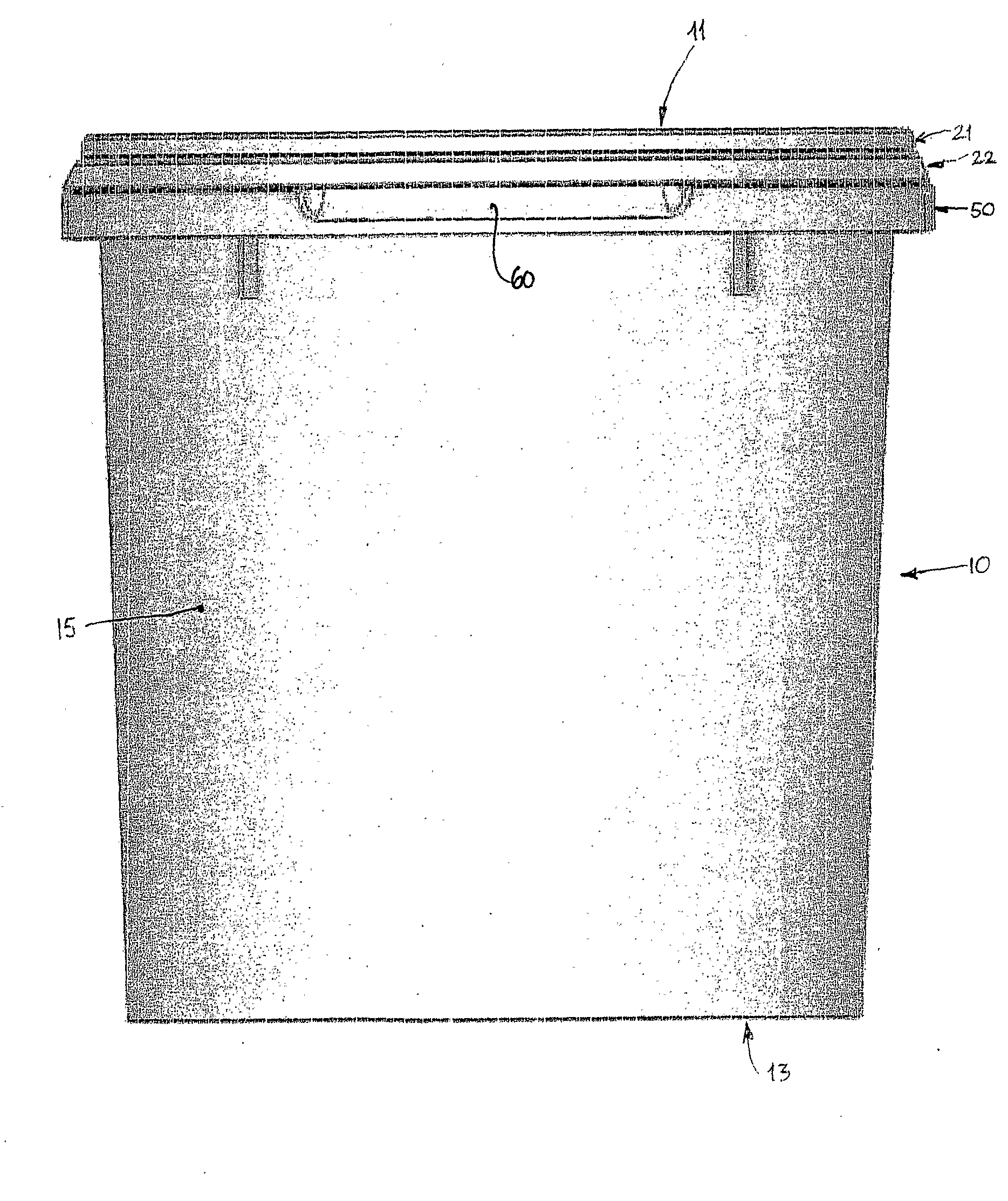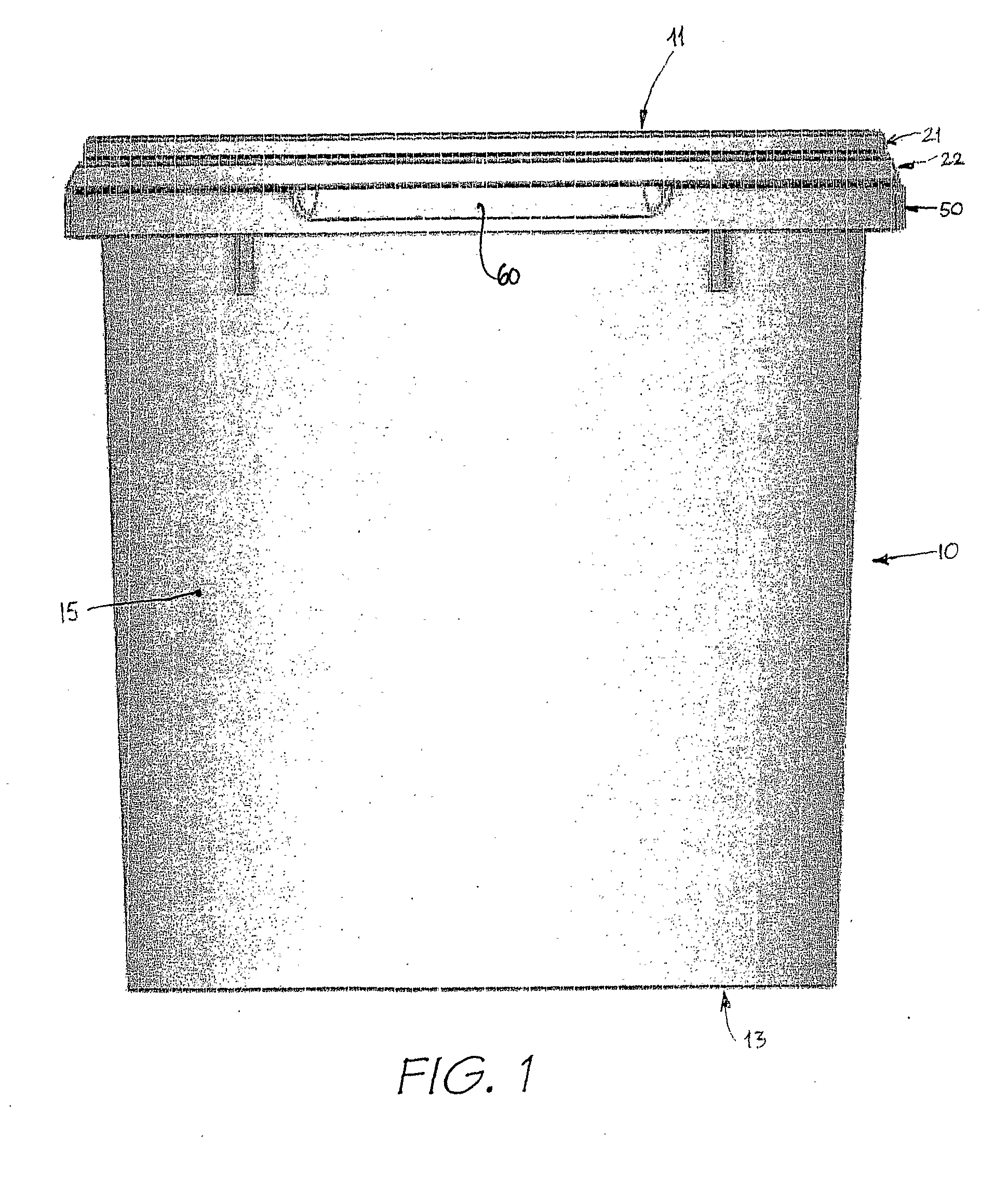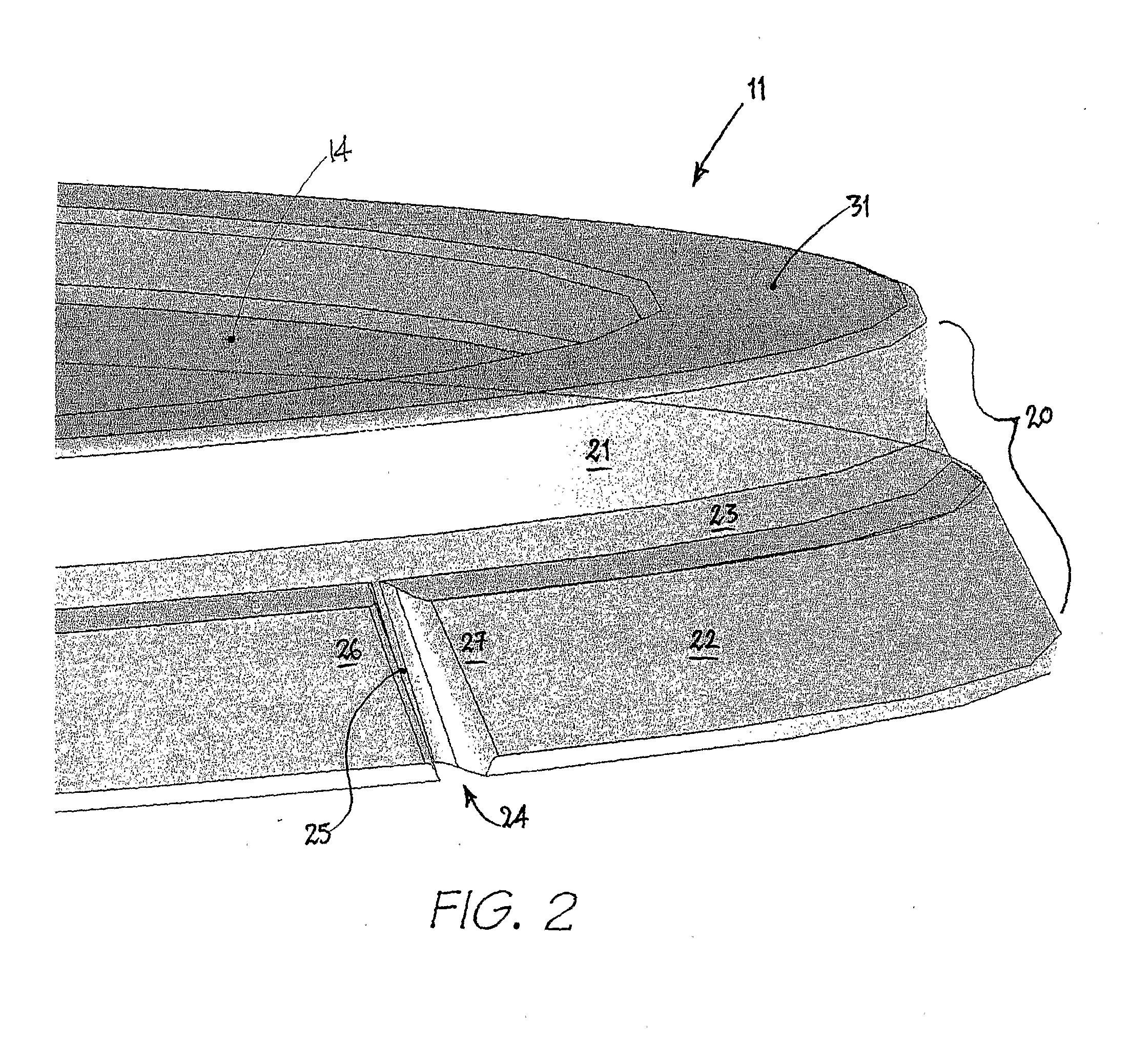Container closure with deformable region in skirt to allow pivoting
a container and skirt technology, applied in the field of container closures, can solve problems such as potential tampering with container contents, and achieve the effects of facilitating finger insertion, facilitating initiation of pivoting of the second portion, and facilitating finger insertion
- Summary
- Abstract
- Description
- Claims
- Application Information
AI Technical Summary
Benefits of technology
Problems solved by technology
Method used
Image
Examples
Embodiment Construction
[0027]Referring to FIG. 1, an assembled container-closure arrangement is depicted comprising a container in the form of a pail 10, and a closure in the form of a lid 11. Whilst the arrangement is typically employed with a circular pail and lid as shown, the arrangement may be employed with square or rectangular pails and lids etc.
[0028]The pail and lid may each be moulded from polypropylene or high density polyethylene. The pail may be moulded in any desired size and may have a volumetric capacity in the order of eg. 0.5 to 20 litres. The pail may also be formed from a metal material. In addition, the lid-pail arrangements are suited to both tapered (FIG. 1) and straight-sided containers.
[0029]The pail 10 has a base 13 which is sized so that it can be located at a recess portion of the lid. In this regard, the recess portion includes a generally flat central region 14 (FIG. 2) whereby the base of an overlying pail can be positioned at region 14, so that a number of the pail-lid arra...
PUM
 Login to View More
Login to View More Abstract
Description
Claims
Application Information
 Login to View More
Login to View More - R&D
- Intellectual Property
- Life Sciences
- Materials
- Tech Scout
- Unparalleled Data Quality
- Higher Quality Content
- 60% Fewer Hallucinations
Browse by: Latest US Patents, China's latest patents, Technical Efficacy Thesaurus, Application Domain, Technology Topic, Popular Technical Reports.
© 2025 PatSnap. All rights reserved.Legal|Privacy policy|Modern Slavery Act Transparency Statement|Sitemap|About US| Contact US: help@patsnap.com



